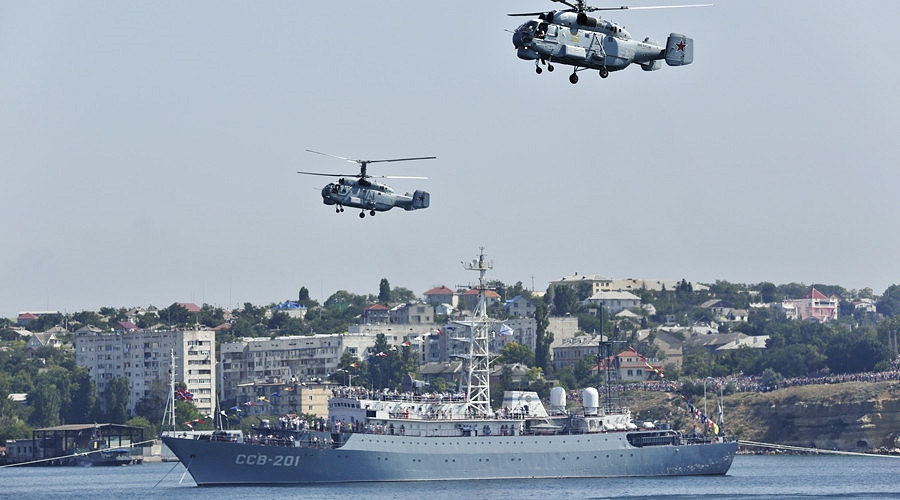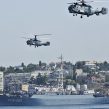
Russia’s New Maritime Doctrine
Publication: Eurasia Daily Monitor Volume: 12 Issue: 151
By:

On July 26, Russia released its new maritime doctrine to 2020 (Kremlin.ru, July 26). It is important not to confuse this document with a new “naval doctrine,” although this doctrine certainly has important things to say about Russia’s navy. Rather, the “Maritime Doctrine of the Russian Federation” is a comprehensive state policy for governing all of Russia’s maritime assets, military fleets, the civilian fleet, the Russian equivalent of the United States’ merchant marine, as well as naval infrastructure. Thus, for all the martial language contained within the newly released “Maritime Doctrine,” this document frequently refers to international norms and law. Notably, while Russia’s military regularly assumes a highly paranoid threat assessment for the Arctic (see EDM, March 28, 2014; December 3, 2014), the “Maritime Doctrine” talks about building up both the military and civilian infrastructure, including shipbuilding, in the Polar region (“Maritime Doctrine of the Russian Federation,” Kremlin.ru, July 26).
To be sure, the doctrine does also contain more hostile passages, and its release—or at the very least the official statements surrounding its announcement—seems to have been at least partially influenced by the ongoing standoff between Russia and the West. As commentators have pointed out, the “Maritime Doctrine” forthrightly says that Russia’s relations with the North Atlantic Treaty Organization (NATO) continue to be obstructed by the Alliance’s enlargement plans—which the new doctrine seeks to counter. Moreover, Deputy Prime Minister Dmitry Rogozin stated that the new doctrine had been proclaimed due to “above all, the changing international situation; and, of course, strengthening Russia’s position as a sea power” (Kremlin.ru, July 26; The Moscow Times, August 7; RT, July 26).
While there is no doubt that Moscow wants to communicate to the West its resolve and military capabilities, the fact remains that the guidelines outlined in the doctrine, which call for the building up of Russian naval power, are meeting serious difficulties. Indeed, Russian shipbuilding has devolved to a perilous state. Moscow-based defense expert Ruslan Pukhov has called Russia’s shipbuilding industry a black hole that eats up huge amounts of state spending (RT, August 4). And this is certainly not an isolated opinion—in fact, it confirms Western assessments. Nevertheless, one should not assume, therefore, that Russia’s navy is not a formidable force for the purposes of defense of the homeland in purely conventional contingencies—saying nothing of the nuclear fleet’s continued ability to launch a retaliatory second strike, if necessary. Undeniably, the firepower presently available to Russia’s Black and Baltic Sea Fleets would make any NATO attack or counter-attack in these regions hazardous. In other words, the Baltic and Black Sea Fleets are fully capable of creating an extremely hazardous anti-access and area denial (A2/AD) environment against NATO in both theaters, in tandem with Russian air, air defense, and ground forces and artillery (DefenseOne, April 2).
Russia’s newly updated Maritime Doctrine is, thus, another example of Putin’s effort to mobilize the state and, in this case, the military and the defense industry for a situation of protracted but mainly political conflict against the West. In this standoff, Russian forces aim to dominate Moscow’s immediate neighborhood and deter Western forces and influence. As the war in Ukraine makes clear, Russia is not looking to develop a purely operationally defensive force alignment. Rather, all this is rooted in Moscow’s abiding perception that Russia is permanently under threat from NATO. The fact that Russia equates its own security with the defenselessness of its neighbors is another giveaway of its perceptions and intentions. But the new Maritime Doctrine does not tell us how the Russian navy would be deployed, how it would fight, or where it would be active in the event of a real conflict. Instead, as stated above, it is a guideline for the entire set of maritime structures belonging to the state; and thus it is a programmatic document more than a military doctrine. Even though it contains a significant aggressive component, the document is not a doctrine for war but rather for shipbuilding and peacetime deployment to avert the war that Moscow fears it might have to fight. As such, the Maritime Doctrine is quite a different document from what it was initially understood to be by many in the West (Kremlin.ru, July 26; Argumenty i Fakty, July 27).
The true implications of Russia’s Maritime Doctrine to 2020 should not inspire complacency, but hysteria is also not the answer. What will be required instead will be a robust deterrent to Moscow’s conventional threats and the elaboration of a sensible strategy. So while this doctrine bears careful scrutiny, it needs to be read for what it is—not for what it is not.




